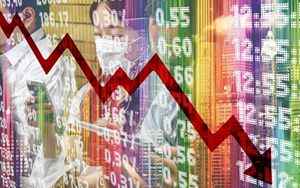(Finance) – After the post-Covid recovery, the state of health of the Italian entrepreneurial fabric is once again worsening. The updated analysis of‘Cerved Business Risk Observatory, according to what emerges from a press release, notes that between 2021 and 2022 land companies at risk of default have grown nearly by 2%, going from 14.4% to 16.1% and reaching 99,000 units (+11,000), with 11 billion euros more in financial debt now equal to 107 billion (10.7% of the total). The peaks of 2020 remain far away, when potentially risky companies were even 134,000 (21.7%).
“Yet, the trend reversal worries analysts”, Cerved states. If we also consider the so-called ‘vulnerable’ companies, which in the three-year period 2019-2022 went from 29.3% (181,000) to 32.6% (201,000), financial debts grow by another 195.8 billion euros ( +28 billion), equal to 19.5% of the total. On the employment front, Cerved quantifies over 3 million workers, almost 1 in 3 (30.5%), employed in s‘fragile’ objects: in fact, to the 831,000 company employees at greater risk (8.5%, +129,000 people compared to 2021), must be added the over 2.1 million who work in companies considered vulnerable (21.9%, +228,000). Shefragile businesses are found mainly in the South, where they even make up 60.1% of the total, aggravating the already large gap with the north of the country: the provinces with the most significant worsening are in fact Isernia, the south of Sardinia, Matera, Foggia and Cagliari (but also Rome), while those with the highest share of companies at risk are Crotone, Terni, Isernia itself, Reggio Calabria, MessinaSyracuse and Cosenza.
“The estimates are based on the analysis of the performance of 618,000 joint stock companies in the period 2019-2022 – he comments Andrea Mignanelli, Chief Executive Officer of Cerved – assessed using the Cerved Group Score, a risk index that calculates the probability of default of companies from a perspective perspective. The timely safeguards adopted during the pandemic helped secure the system, and the strong rebound in economic performance linked to the effects of the PNRR led to the design of improvement scenarios. However, the conditions that occurred in the first months of 2022 – the worsening of the price increases of raw materials and the Russian-Ukrainian conflict, followed by inflation, the increase in the cost of debt, the phasing out of the support measures – have unfortunately undermined the ability to keeping an already weakened production system “.
The most impacted macro-sectors are the construction (from 15.2% to 17.6% of companies at risk) and services (from 14.9% to 16.7%); at a more disaggregated level, the sectors most affected are non-financial services (in particular restaurants and hotels), transport (airport management) and heavy industry (steel). Even among the top 10 sectors with the highest share of companies at risk, eight belong to services: air transport (41.2%), hairdressers and beauty salons (37.8%), retail distribution in the fashion sector (36 , 4%). As for size, the worsening is more consistent between micro-enterprises (from 14.9% to 16.7% in the risk area) and small ones (from 8.0% to 9.9%), already most affected by the pandemic and more exposed to the effects of price increases.
